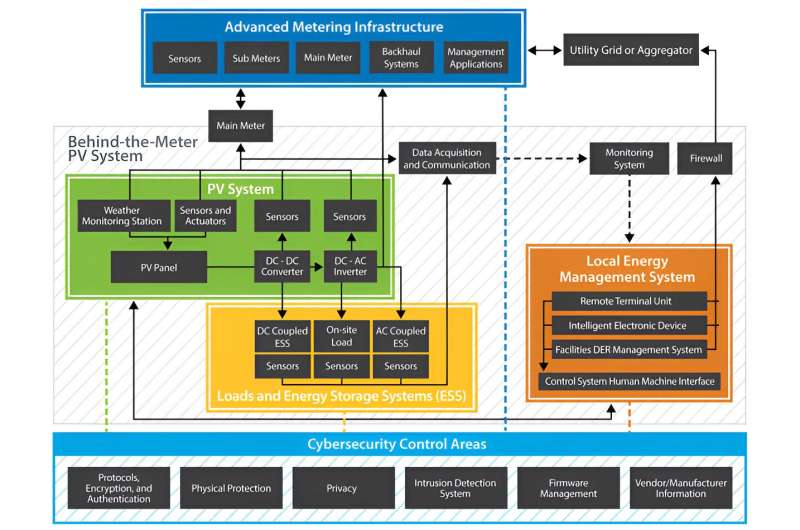
As the world pushes for sustainable energy, the spotlight turns to distributed energy resources (DERs), with solar photovoltaic (PV) systems at the forefront. In the quest for decarbonization, a shining star emerges—the Distributed Energy Resource Cybersecurity Framework (DER-CF).
Unveiled at the 2023 IEEE Power and Energy Society's Innovative Smart Grid Technologies conference, a new paper by National Renewable Energy Laboratory (NREL) researchers sheds light on the importance of securing solar energy.
Securing tomorrow, today
With the global energy landscape transforming, securing behind-the-meter DERs is critical. The United States faces unprecedented complexity in its energy infrastructure, making cybersecurity a top priority. A staggering 90 GW of DERs, including half of the nation's rooftop solar installations, demand proactive measures against cyber threats.
A shield in the digital battlefield
Enter DER-CF, an innovative tool developed by NREL and funded by the U.S. Department of Energy's Federal Energy Management Program. The free, open-access platform helps asset owners identify their cybersecurity maturity posture within their DER systems through self-assessments. Featuring an interactive dashboard, progress tracking, and graphical representations, DER-CF is a game-changer in fortifying cybersecurity maturity for all types of renewable deployments against cyber threats and addressing evolving cybersecurity challenges.
Decoding solar PV security
The paper delves into the distinctive components of behind-the-meter solar PV systems, utilizing the National Institute of Standards and Technology Cybersecurity Framework. From inverters to electronic security perimeters, it showcases customized cybersecurity controls for each element. However, it goes beyond that—integrating foundational controls such as account management and configuration management, along with offering recommended best practices applicable to all renewable energy assets.
Bright horizons: Updates and enhancements
NREL continues its commitment to expanding and upgrading the DER-CF tool, tailoring it to better meet the needs of federal and industry users. A recent tool update empowers single users to conduct multiple assessments across their organization, introducing asset and capability mapping. This enhancement further enables organizations to understand and evaluate their facilities' key assets.
In parallel, the Distributed Energy Resource Visual Emulator (DER-VE) is continuing to evolve the capabilities of the DER-CF tool. Currently in development, DER-VE will provide facility energy managers with a comprehensive visual representation of their site's cybersecurity compliance. Developed in collaboration with the Advanced Research on Integrated Energy Systems Cyber Range, DER-VE will offer color-coordinated energy system compliance, facilitating hands-on interaction and interpretation of compliance data.
This forward-looking approach not only aims to enhance understanding but also actively engages stakeholders in the cybersecurity development process, ensuring effectiveness and value for partners.
Explore the future of energy security
Beyond federal government entities, DER-CF's value is set to permeate the broader energy landscape. Subsequent work will focus on dynamic assessments personalized to specific DER systems, comparative analysis for performance evaluation over time, and integration with other capabilities at NREL to enhance multisystem assessments.
More information: Shuva Paul et al, Cybersecurity Assessment for a Behind-the-Meter Solar PV System: A Use Case for the DER-CF, 2023 IEEE PES Innovative Smart Grid Technologies Latin America (ISGT-LA) (2023). DOI: 10.1109/ISGT-LA56058.2023.10328214
Citation: Distributed energy resource cybersecurity framework tool shines in solar cybersecurity assessment (2024, February 20) retrieved 20 February 2024 from https://techxplore.com/news/2024-02-energy-resource-cybersecurity-framework-tool.html
This document is subject to copyright. Apart from any fair dealing for the purpose of private study or research, no part may be reproduced without the written permission. The content is provided for information purposes only.
